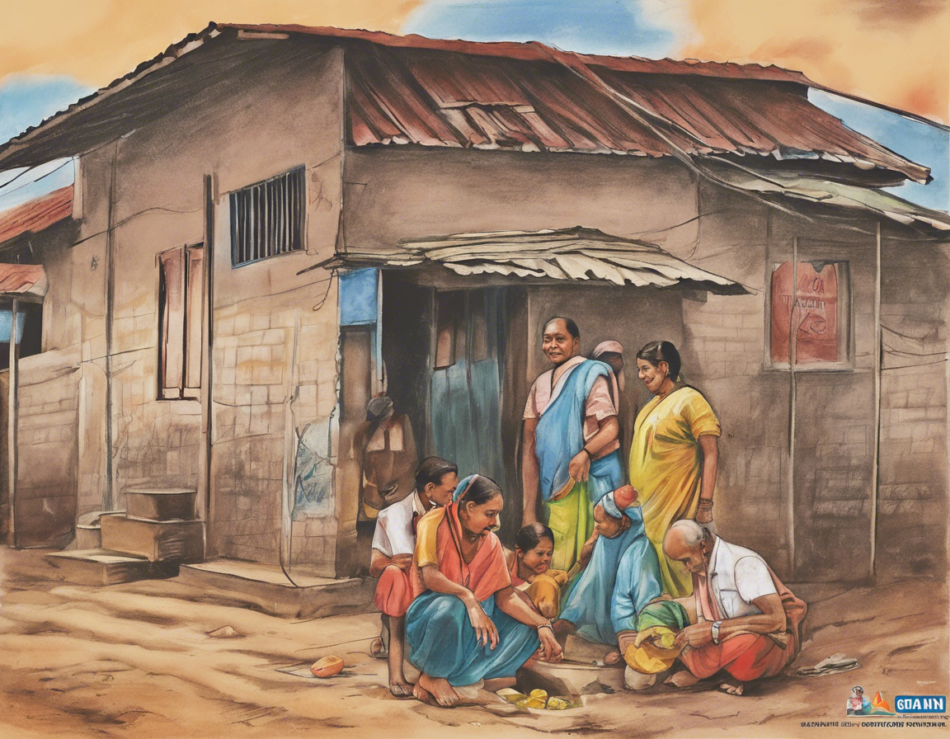Introduction
Rural housing has always been a critical issue in many developing countries, including India. Lack of access to adequate and safe housing has been a significant challenge for families living in rural areas, resulting in poor living conditions and compromising their overall well-being. In response to this pressing issue, the Government of India launched the Pradhan Mantri Awas Yojana Gramin (PMAY-G) scheme, aimed at transforming rural housing by providing affordable, sustainable, and quality housing for those in need.
Background of PMAY-G
The PMAY-G was launched in April 2016 as a part of the government’s flagship initiative, aimed at providing “Housing for All” by 2022. The scheme aims to provide financial assistance to rural households living below the poverty line to construct pucca houses with basic amenities. The key objectives of PMAY-G include:
- Providing financial assistance for the construction of pucca houses to homeless and those living in kutcha houses.
- Promoting sustainable and eco-friendly construction techniques.
- Ensuring the provision of basic amenities such as sanitation, electricity, and water supply.
- Empowering women by ensuring they are the co-owners of the house.
- Promoting social inclusion by ensuring housing for marginalized communities.
Key Features of PMAY-G
-
Beneficiary-led Construction: One of the key features of PMAY-G is that it follows a beneficiary-led construction model, where the eligible beneficiaries are actively involved in the construction of their homes. This ensures a sense of ownership and responsibility among the beneficiaries.
-
Financial Assistance: Under the scheme, eligible beneficiaries receive financial assistance from the government to construct their houses. The amount of assistance varies depending on the region, with higher amounts allocated for hilly and difficult areas.
-
Technological Interventions: PMAY-G promotes the use of technology in the construction process to ensure quality and efficiency. This includes the use of geo-tagging and beneficiary details tracking to monitor progress.
-
Empowerment of Women: In a bid to promote gender equality and women empowerment, PMAY-G mandates that the house should be in the name of the female head of the household or joint ownership with the male head.
-
Disability-friendly Houses: The scheme also includes provisions for constructing houses that are disability-friendly, ensuring access and facilities for persons with disabilities.
Implementation and Progress
Since its launch, PMAY-G has made significant progress in providing housing for rural households. The scheme has introduced a transparent and accountable process for beneficiary selection and house construction. The use of technology for monitoring and tracking progress has helped in reducing delays and ensuring quality construction. As of [mention latest data], [mention number] houses have been constructed under PMAY-G, benefiting thousands of rural families across India.
Challenges and the Way Forward
While PMAY-G has been successful in providing housing for many rural households, there are still challenges that need to be addressed. Some of the key challenges include:
- Funding: Ensuring adequate funding for the scheme to reach its target of providing housing for all by 2022.
- Awareness: Increasing awareness about the scheme among rural communities to ensure maximum participation.
- Quality Assurance: Ensuring that the constructed houses meet quality standards and are sustainable in the long run.
- Monitoring and Evaluation: Strengthening monitoring and evaluation mechanisms to track progress and address any issues that may arise.
To overcome these challenges, there is a need for continued government support, community engagement, and collaboration with various stakeholders. By addressing these challenges, PMAY-G can further accelerate the pace of rural housing construction and contribute to improving the overall living conditions of rural communities in India.
Frequently Asked Questions (FAQs)
- Who is eligible to benefit from PMAY-G?
-
Rural households living below the poverty line, including homeless and those living in kutcha houses, are eligible to benefit from PMAY-G.
-
How can one apply for PMAY-G?
-
Beneficiaries can apply for PMAY-G through their respective panchayats or online portals set up by the government for the scheme.
-
What is the role of beneficiaries in the construction process?
-
Beneficiaries are actively involved in the construction process and are responsible for ensuring the timely completion of their houses.
-
What are the key components of a PMAY-G house?
-
A PMAY-G house includes a pucca structure with basic amenities such as sanitation, electricity, and water supply.
-
Can beneficiaries choose the design of their houses under PMAY-G?
-
Beneficiaries have the flexibility to choose the design of their houses based on their preferences and requirements.
-
Are there any special provisions for marginalized communities under PMAY-G?
-
Yes, PMAY-G aims to ensure housing for marginalized communities by providing special provisions and assistance as needed.
-
Is there a time frame within which houses should be constructed under PMAY-G?
-
Yes, beneficiaries are required to complete the construction of their houses within the stipulated time frame as per the guidelines of the scheme.
-
What happens if a beneficiary faces challenges during the construction process?
-
Beneficiaries can seek assistance and guidance from the designated authorities or agencies overseeing the implementation of PMAY-G.
-
Are there penalties for non-compliance with the guidelines of PMAY-G?
-
Non-compliance with the guidelines of PMAY-G may result in the exclusion of beneficiaries from the scheme or other penalties as per the rules.
-
How can I track the progress of my PMAY-G house construction?
- Beneficiaries can track the progress of their house construction through the online portals set up by the government for PMAY-G or by coordinating with the designated officials in their area.
In conclusion, the Pradhan Mantri Awas Yojana Gramin (PMAY-G) is a transformative scheme that aims to provide affordable and sustainable housing for rural households in India. By addressing the housing needs of the rural poor, PMAY-G not only improves their living conditions but also contributes to their overall well-being and empowerment. With continued government support and community participation, PMAY-G has the potential to significantly impact the lives of millions of rural families across the country.
